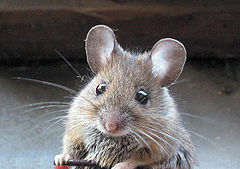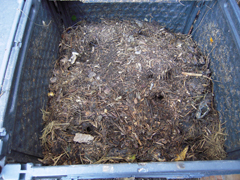What is the common mouse?
- The mouse can also be called common house mouse, house mouse and laboratory mouse is the most common species of mouse that can be found.
- After the mammal Homo sapiens is the largest number of individuals and maintains a relationship of commensalism
undefined "> commensalism with them, we will always live together. - They weigh between 12-40 grams, and measure between 15-19 cm, including tail, which involves more than half of its length.
- His coat is short and gray, but lighter on the belly
- His hair is sparse in the tail and ears. It has a long whiskers are sensitive to the touch and provide information on the environment.
- They are good jumpers and climbers and long tail used to get around, eat, fight or maintain balance.
- Mostly active at dusk or at night, and fleeing the bright lights.
- They are territorial animals and a dominant male is always a group of females and young individuals in their group.
Life cycle
- It is not easy to distinguish the sex of the mice at an early age, though the distance between the genitals and the anus is smaller in females.
- Upon reaching adulthood, males differ primarily due to the large size of their testes in comparison to body size and females have five pairs of mammary glands and nipples in males are not seen.
When does it occur?
-
First we must say that I live in the garden, in trees, holes ... - Appears in a compost food scraps when they are added to compost is higher than that bodies that are in it can break down and start a
process of degradation of organic matter in which there is too much moisture and odors generated. - If the content of the compost remains motionless and without mixing for a long time, the mice find it a good place to nest, as it is a warm, dark, stable weather conditions, soft and comfortable.
What are the benefits?
- They eat vegetable waste, but can also eat leftover meat, fish and dairy products.
- Maintain the content of aerated compost as they make tunnels through which circular.
Is it harmful to the composting process?
- Is not harmful in any phase of the composting process.
If I want to leave, I do?
- Mix the compost more often, so that they can avoid the nest, because the mice did your farm located in a place that is continually disturbed.
- Maintaining adequate moisture, thus, will ensure that the decomposing material reaches high temperatures should be in any composting process, so that mice can not withstand such conditions and will move to other locations.
